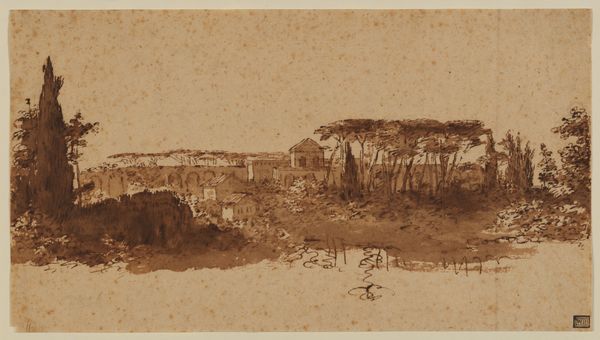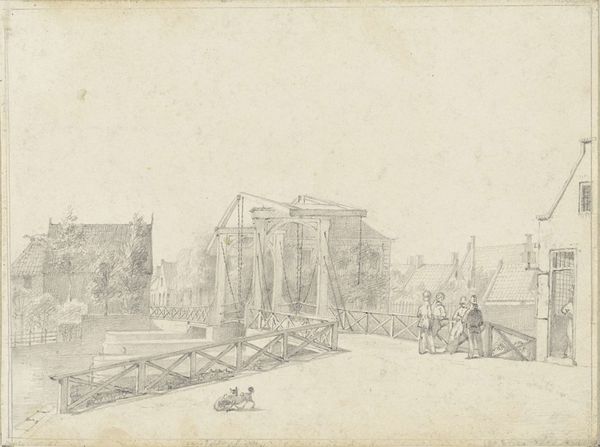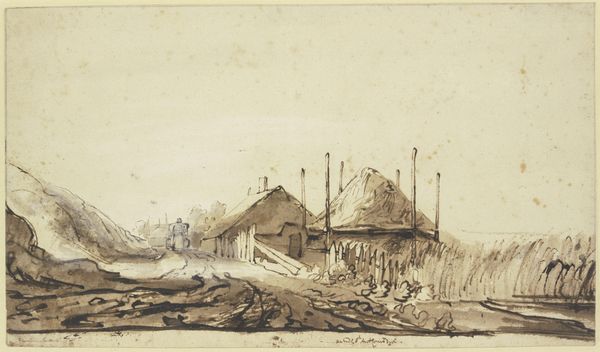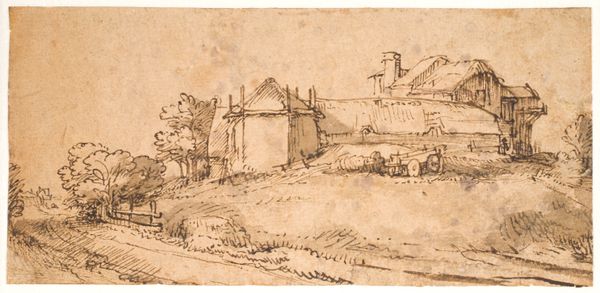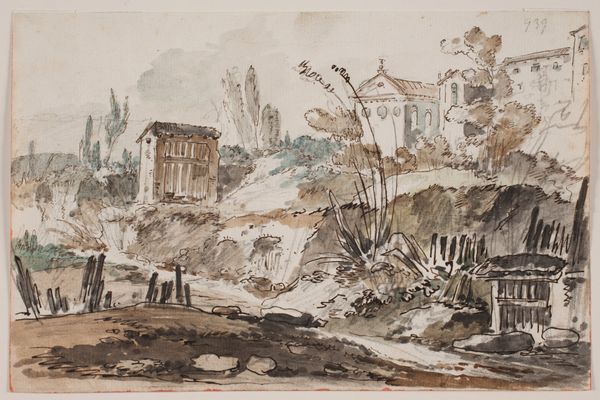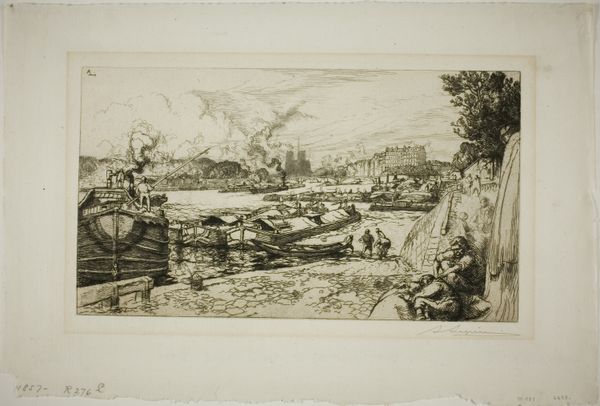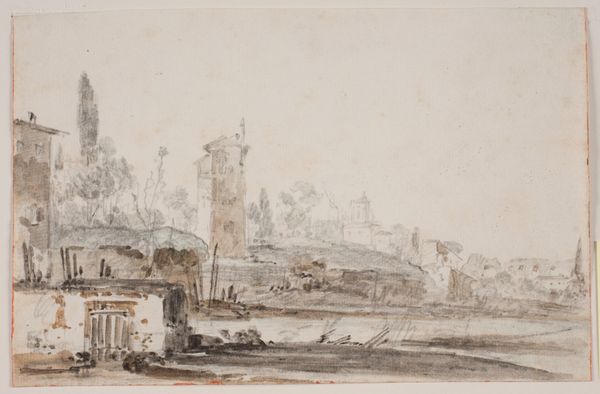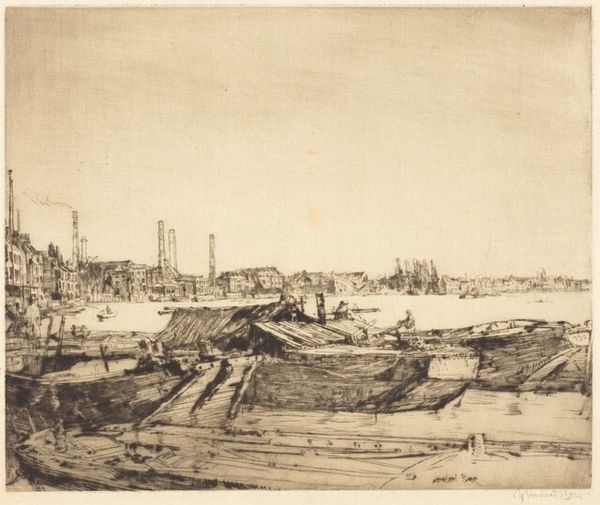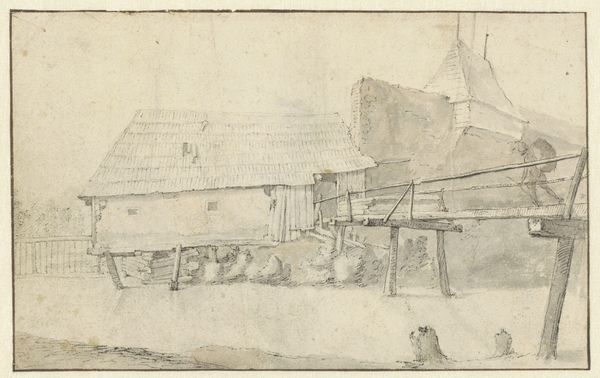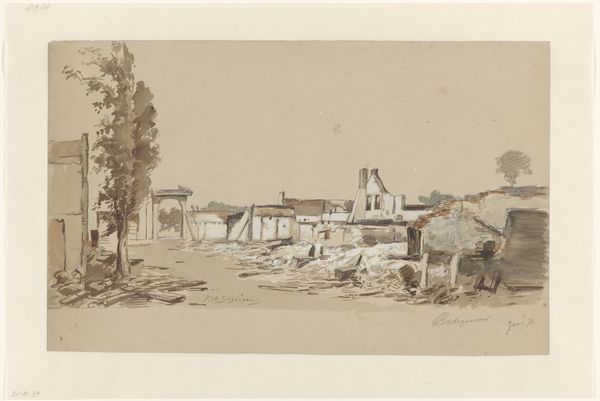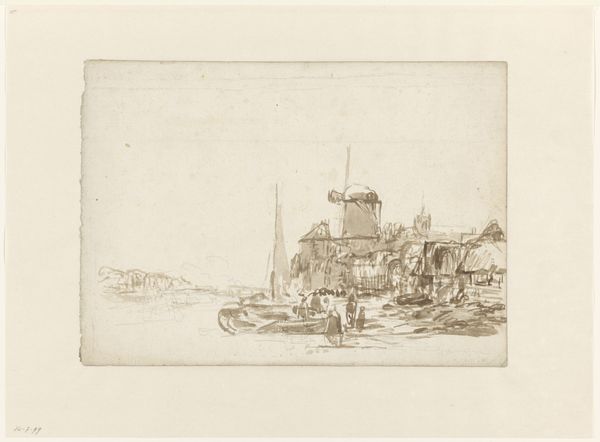
Copyright: Public Domain
Editor: This is Canaletto's "Capriccio with a Lock Gate by a River," from around 1754, rendered in ink and watercolor. I'm struck by the delicate balance between the architectural forms and the soft washes of color; it has a very dreamlike quality. What visual elements particularly stand out to you? Curator: Notice the contrasting textures and the subtle yet strategic deployment of light. The solidity of the lock gate and adjacent structures is sharply juxtaposed with the ethereal rendering of the background buildings and sky. The linearity in the architectural details against the atmospheric blending in the sky constructs the visual organization within the picture plane. Have you considered how Canaletto uses line weight to establish depth? Editor: That's interesting. I see that now—the heavier lines in the foreground definitely bring those elements forward, creating a sense of perspective. Are there other formal strategies he uses to guide the viewer's eye? Curator: Absolutely. Observe the distribution of tonal values. Canaletto employs a limited palette, yet achieves a remarkable range of expression. The subtle gradations from light to dark articulate the forms, suggesting a play of light that activates the composition. It might be relevant to note the surface articulation in the foreground buildings that contrasts against the lighter sky. Editor: It's fascinating how much can be conveyed with such restraint. Thank you for highlighting these formal aspects! I understand a bit better the balance between reality and imagination in this "capriccio." Curator: Indeed. A focused examination of an artwork’s elements illuminates its fundamental character and structure, so often overlooked when cultural context is prioritized over visual construction.
Comments
No comments
Be the first to comment and join the conversation on the ultimate creative platform.
